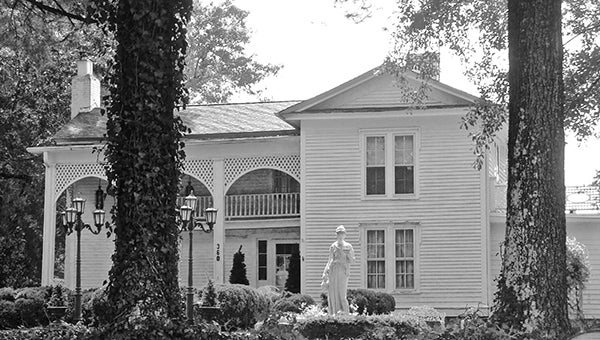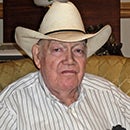I’ll tell you a story about the Foster family
Published 10:00 pm Monday, September 12, 2016
I have a story to tell you. It’s the story of the Foster family, told to me by two cousins, D.M. Wolfe and Hugh Foster. If you enjoy a trip into the past, you will enjoy this story.
The Foster family arrived in this country in the late 1600s-early 1700s, settling first
in Virginia. Later generations moved down to South Carolina. The story begins shortly after the War with D.M. Wolfe’s and Hugh Foster’s great-granddaddy, Festus Flavius Foster, “Pappy.” Pappy was a young man in 1880 after the War. He built the house located on Foster Road off I-26, known today as “The Christmas House” because of the light display at Christmas time.
The house was begun in 1882. The logs were cut across the road from where the house now stands, carried down to a water power sawmill on Meadow Creek, then hauled back up the hill to where the house was built. The banisters were hand turned and the framing was put together with pegs. Pappy and Mamie, Ella and Clement Foster, moved into the house with four children in 1885.
D.M. describes the original house: “There were two staircases that both led upstairs. One was for the men to use, the other was for women. The upstairs was divided so you couldn’t cross from one side to the other. You had to go back down the stairs to get to the other side. After the war when the women were upstairs spinning and sewing, they could watch out the window for any strangers, stirring up the dust on the road as they approached. Carpetbaggers were active in the area and would sometimes show up and take things. So the women had a secret compartment in the floor where they would hide their sewing and other belongings.”
“Pappy was a beekeeper,” D.M. continues. “He had 50 hives. He would take honey to the fair in Spartanburg and display it in a walnut chest.” The walnut chest now sits in D.M.’s living room, proudly on display. “Mamie had a cotton patch. She went to Spartanburg and bought a wrist watch with her cotton money.”
The story continues with the next generation. William Perry Foster was one of Pappy’s children. He married Laura McMillan of New Prospect. Laura grew up in a brick house, that had two doors. One door was for the men to use and led to an area where they could smoke pipes, roll cigarettes and drink their booze. The other door led to the women’s side, a more refined atmosphere.
William and Laura had three children, Margaret, Festus, and Crumble Hugh. Margaret was D.M. Wolfe’s mother and Crumble Hugh was Hugh Foster’s father. Margaret related the next chapter of Foster history to her son, D.M.
He tells me, “Some relatives had left South Carolina for the California Gold Rush. They encouraged William and Laura to head west and they left for Oklahoma in a buggy with the three children, settling near Oklahoma City. William worked as a cowboy and rancher. But they wanted to get to California and eventually took a covered wagon to make the trip. They travelled alone, not in a wagon train. This was perilous at the time with Indians and hardships along the way and no support from fellow travellers.”
“It was the late 1800s or early 1900s. They had the three little children. They could only cover about 15 miles a day. Along the way, some Indians tried to buy Festus, wanted to trade gold and jewelry for him,” D.M. laughs. “They continued for six months and got as far as Death Valley. At this point, Laura became ill so they turned around and headed back. They went to Texas where they had some friends that were farming near Terrell and Quinlan. The land was fertile and they grew cotton five feet tall.”
Laura died in 1911 in Quinlan. She was buried at Gooseneck Baptist Church and School. Many years later, D.M went to Terrell and Quinlan to find Laura’s grave. He met an older couple who had always lived in the area. They drove him to the location of the school.
D.M. remembers, “There were no real grave markings there but we found some stones on the ground. This was a place that was dirt, with no other stones or rocks around, so this looked like a gravesite. The couple told me there had been a big feud there one Sunday afternoon. Seven people were killed so they never had school or church there again.”
After Laura died, the children were taken to New Orleans where their Aunt Effie, William’s sister, met them at the train station and took them back to South Carolina where they grew up in Pappy’s house.
D.M. continues the story, “My mother told me that Effie would churn the butter. Pappy hung tobacco along with peanuts in the corncrib to dry. The children would go in the barn, make a beeline to the corncrib, eating as many peanuts as they could. In the evening the men would put tobacco in a corncob pipe. There was always a fire in the fireplace. They never struck a match but would take a broom straw, light it in the fire, light the tobacco, then put the broom straw fire out with their fingers and save the straw for next time. They slept on feather beds. A straw tick was laid on ropes and the feather bed on top.”
Pappy died in 1947 at age 93, Mamie died in 1932 at age 75. There’s more to the story as we follow the next generation. To be continued on September 27.







